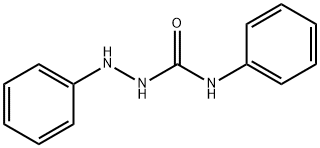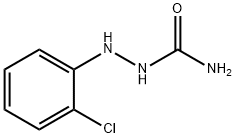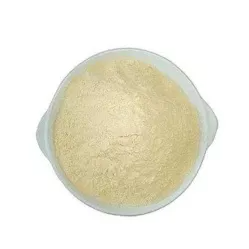1-PHENYLSEMICARBAZIDE
- CAS NO.:103-03-7
- Empirical Formula: C7H9N3O
- Molecular Weight: 151.17
- MDL number: MFCD00007942
- EINECS: 203-072-3
- SAFETY DATA SHEET (SDS)
- Update Date: 2025-01-27 09:38:02

What is 1-PHENYLSEMICARBAZIDE?
The Uses of 1-PHENYLSEMICARBAZIDE
1-Phenylsemicarbazide was used in the synthesis of a series of alkyl(aryl/heteroaryl) substituted 3-trifluoromethyl-1H-1-phenylpyrazoles and alkyl 3-carboxylate analogs by the cyclocondensation reactions with 4-alkoxy-1,1,1-trihaloalk-3-en-2-ones.
What are the applications of Application
1-Phenylsemicarbazide is A useful biochemical for proteomics research
Definition
ChEBI: Phenicarbazide is a member of phenylhydrazines.
brand name
Antipyretic dellepsoids d26.
World Health Organization (WHO)
Phenicarbazide, which has analgesic and antipyretic activity, was introduced in the 1970s. It has been withdrawn in at least one country on grounds of its adverse effect profile and it appears to have fallen into disuse in others.
Purification Methods
Crystallise it from water and dry it in a vacuum over KOH. [Beilstein 15 H 287, 15 II 106, 15 III 184, 15 IV 180.]
Properties of 1-PHENYLSEMICARBAZIDE
| Melting point: | 171-174 °C (lit.) |
| Boiling point: | 273.17°C (rough estimate) |
| Density | 1.2100 (rough estimate) |
| refractive index | 1.5860 (estimate) |
| storage temp. | Keep in dark place,Inert atmosphere,Room temperature |
| solubility | acetone: very soluble(lit.) |
| form | powder to crystal |
| pka | 11.16±0.43(Predicted) |
| color | White to Light yellow |
| BRN | 743311 |
| CAS DataBase Reference | 103-03-7(CAS DataBase Reference) |
| IARC | 3 (Vol. 12, Sup 7) 1987 |
| EPA Substance Registry System | Phenicarbazide (103-03-7) |
Safety information for 1-PHENYLSEMICARBAZIDE
| Signal word | Warning |
| Pictogram(s) |
 Exclamation Mark Irritant GHS07  Health Hazard GHS08 |
| GHS Hazard Statements |
H315:Skin corrosion/irritation H319:Serious eye damage/eye irritation H335:Specific target organ toxicity, single exposure;Respiratory tract irritation H351:Carcinogenicity |
| Precautionary Statement Codes |
P201:Obtain special instructions before use. P261:Avoid breathing dust/fume/gas/mist/vapours/spray. P280:Wear protective gloves/protective clothing/eye protection/face protection. P305+P351+P338:IF IN EYES: Rinse cautiously with water for several minutes. Remove contact lenses, if present and easy to do. Continuerinsing. P405:Store locked up. |
Computed Descriptors for 1-PHENYLSEMICARBAZIDE
New Products
4,4-Difluoropiperidine hydrochloride tert-butyl 9-methoxy-3-azaspiro[5.5]undecane-3-carboxylate Indole Methyl Resin N-Isopropylurea N,N-Dicyclohexylcarbodiimide(DCC) MELDRUMS ACID 5-METHYLISOXAZOLE-4-CARBOXYLIC ACID Magnessium Bis glycinate Zinc ascorbate 1-bromo-2-butyne 2-acetamidophenol 9(10H)-anthracenone Erythrosin B, 4-Piperidinopiperidine 2-((4-morpholinophenylamino) (methylthio) methylene) malononitrile 2,4-dihydroxybenzaldehyde 3-(4-morpholinophenylamino)-5-amino-1H-pyrazole-4-carbonitrile Methyl 2-methylquinoline-6-carboxylate 2,6-dichloro-4-nitropyridine 4-Bromo-2-chlorobenzonitrile 2-(benzylamino)acetic acid hydrochloride 4-(tert-Butoxycarbonylamino)but- 2-ynoic acid 3,4-dihydro-2H-benzo[b][1,4]dioxepine 1-Phenyl-1-cycloprppanecarboxylicacidRelated products of tetrahydrofuran




![N1-(2,6-DICHLORO-4-PYRIDYL)-2-[2-(TRIFLUOROMETHYL)PHENYL]HYDRAZINE-1-CARBOXAMIDE](https://img.chemicalbook.in/StructureFile/ChemBookStructure2/GIF/CB3258914.gif)


![N-([2-(2,4-DICHLOROPHENYL)HYDRAZINO]CARBONYL)-2-METHYL-4-(TRIFLUOROMETHYL)-1,3-THIAZOLE-5-CARBOXAMIDE](https://img.chemicalbook.in/StructureFile/ChemBookStructure2/GIF/CB7210929.gif)
You may like
-
 103-03-7 1-Phenylsemicarbazide 98%View Details
103-03-7 1-Phenylsemicarbazide 98%View Details
103-03-7 -
 n-Phenylsemicarbazide CAS 103-03-7View Details
n-Phenylsemicarbazide CAS 103-03-7View Details
103-03-7 -
 1-Phenylsemicarbazide CAS 103-03-7View Details
1-Phenylsemicarbazide CAS 103-03-7View Details
103-03-7 -
 1-Phenylsemicarbazide CAS 103-03-7View Details
1-Phenylsemicarbazide CAS 103-03-7View Details
103-03-7 -
 3-(4-amino-1-oxoisoindolin-2-yl)-1-methylpiperidine-2,6-dione 98%View Details
3-(4-amino-1-oxoisoindolin-2-yl)-1-methylpiperidine-2,6-dione 98%View Details -
 20677-73-0 (2,2-diethoxyethyl)methylamine 98%View Details
20677-73-0 (2,2-diethoxyethyl)methylamine 98%View Details
20677-73-0 -
 3-(4-(hydroxyamino)-1-oxoisoindolin-2-yl)piperidine-2,6-dione 98%View Details
3-(4-(hydroxyamino)-1-oxoisoindolin-2-yl)piperidine-2,6-dione 98%View Details -
 57381-49-4 2-bromo-4-chlorobenzonitrile 98%View Details
57381-49-4 2-bromo-4-chlorobenzonitrile 98%View Details
57381-49-4
